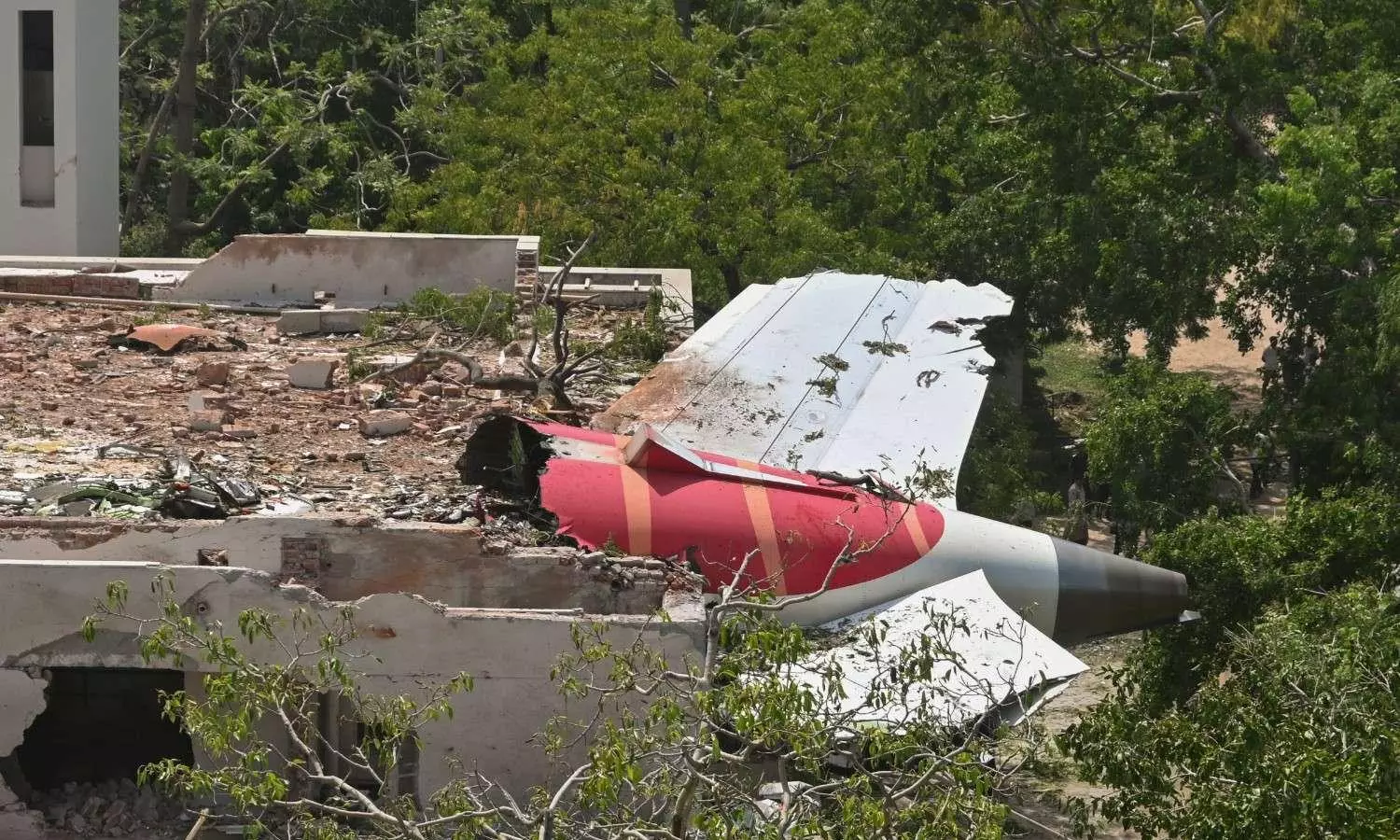
Ahmedabad plane crash: Pilot issued Mayday call; what is it?
Mayday call is an internationally recognised distress signal given by pilots and mariners in an emergency to request immediate aid and attention

An Air India plane that had taken off from Ahmedabad for London's Gatwick Airport crashed within five minutes on Thursday (June 12) afternoon.
The Boeing 787-8 Dreamliner, with 242 people on board, struggled to gain altitude and plummeted into a building in the Meghaninagar area, erupting in fire and black smoke.
The Air India aircraft was under the command of Captain Sumeet Sabharwal and First Officer Clive Kundar. Captain Sumeet Sabharwal was a line training captain (LTC) with 8200 hours of experience, and the co-pilot had 1100 hours of flying experience.
According to the Directorate General of Civil Aviation (DGCA), Captain Sabharwal issued a "Mayday" call to Air Traffic Control (ATC) shortly before the plane lost contact. So, what is a Mayday call?
Also Read: Ahmedabad crash: Kerala nurse returning to London after home visit among fliers
What is a Mayday call?
A Mayday call is an internationally recognised distress signal given by pilots, mariners and other professionals in emergency situations to request immediate aid and attention.
It signifies a life-threatening situation, such as a serious technical issue, engine failure, fire on board, loss of control, accident, or imminent danger to the crew or passengers.
The word “Mayday” is typically repeated three times — “Mayday, Mayday, Mayday” — to alert air traffic control and nearby aircraft that immediate assistance is required.
The pilot issues the Mayday call in an emergency when he finds the plane in immediate danger. It is the highest level of radio distress signal used in aviation and maritime communication.
Also Read: Ahmedabad AI plane crash: Survival chances nearly zero, says expert
How did the term originate?
Coined in the early 1920s, the word "Mayday" was coined by Frederick Stanley Mockford, a radio officer at Croydon Airport in London.
The term comes from the French phrase "m'aider", which means "help me". The call ensures that all other communications on the frequency stop and priority is given to the emergency.
It became part of international radio communication for pilots and mariners by 1923, and was formally adopted in 1927 alongside the Morse "SOS".
Also Read: Ahmedabad plane crash: A rare tragedy for the Boeing 787 Dreamliner
What happens after the call?
A typical distress call "Mayday" is said three times in a row so that it is not mistaken for another similar-sounding word or phrase.
It indicates an emergency that demands immediate attention and a rapid response from authorities or rescue services. All non-urgent radio communication must cease, and air traffic control (ATC) gives top priority to the distress call.
The pilot then shares shares vital information — such as the aircraft's call sign, current location, type of emergency, number of people on board, and any specific needs — to enable a swift and effective rescue response.
After the Mayday call is received, the ATC and other aviation officials are alerted to prioritise the coordination of the rescue efforts and provide the necessary support to the distressed aircraft.

